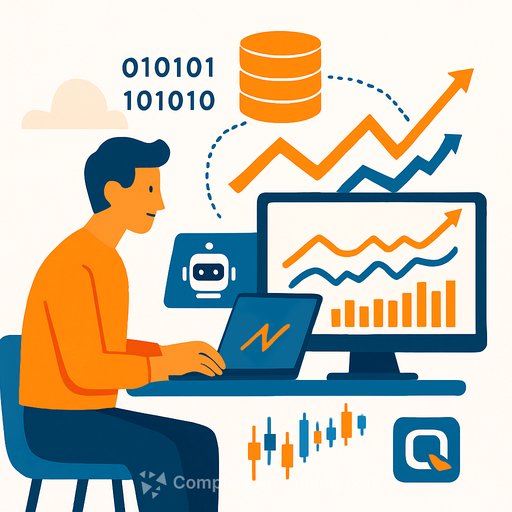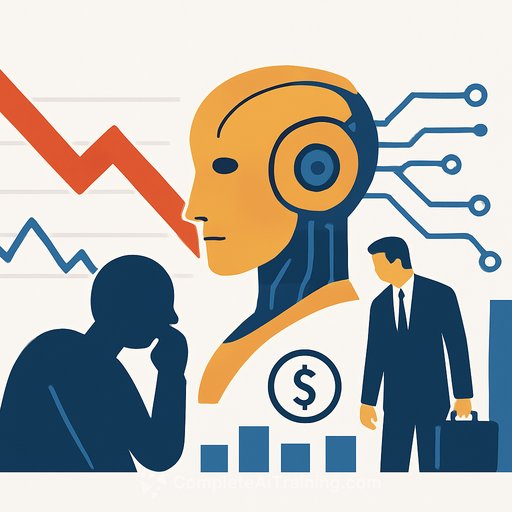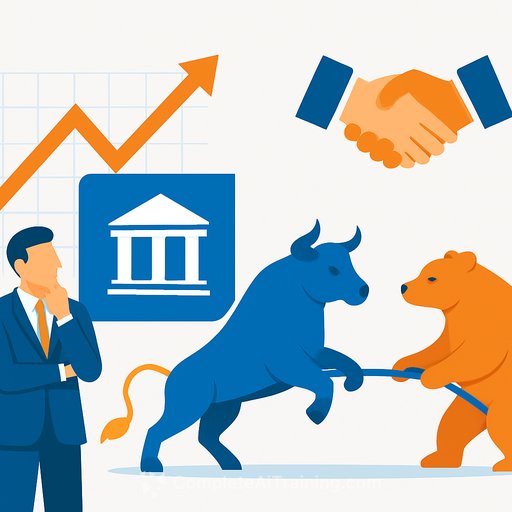AI's Role in Modern Quantitative Finance
Quantitative finance was built on math, statistics, and programming to analyze markets and manage risk. With algorithmic trading now standard, artificial intelligence is the next step in building strategies, managing portfolios, and educating traders. AI is changing how the field operates, and specialized quantitative finance courses are making these skills accessible.
The Growth of AI in Financial Markets
Financial markets generate enormous data every second-prices, order books, news, and social media sentiment. Traditional models can't keep up with this complexity, but AI can identify patterns, adapt to market shifts, and support better decisions.
Tools like neural networks, transformers, and reinforcement learning help forecast trends and optimize portfolios. AI is no longer limited to institutions; it also provides retail traders with user-friendly assistants and no-code platforms, helping individuals build and refine their own strategies.
Why Practical Education is Critical
AI provides new opportunities in trading, but it also brings challenges. Models applied incorrectly or without an understanding of real market dynamics can cause expensive mistakes. Effective learning is essential.
The right programs focus on direct application, using coding exercises, capstone projects, and live trading examples. Instead of just studying theory, you work with market data to build and test strategies. This hands-on method helps both beginners and professionals strengthen their skills in AI and machine learning.
Foundations: Market Data and Feature Engineering
Every trading strategy starts with data. In AI-driven trading, how you prepare that data is as important as the model itself. Traders use historical prices, asset correlations, and alternative data like news sentiment.
Common factors such as momentum, volatility, and valuation ratios are converted into "features" for predictive models. Good feature engineering cleans, structures, and organizes data so that AI models can produce accurate forecasts.
Model Prediction: Intelligent Forecasting
With prepared data, the next step is building the models. AI models are effective because they can process time-based patterns and relationships between different assets. For instance, convolutional neural networks (CNNs) can spot trends in time series data, while LSTMs are built to handle sequences.
An AI for trading course introduces these models practically. It teaches the logic behind each method, not just the code. You work with supervised learning for predictions and unsupervised techniques for clustering, with an emphasis on real-world use.
AI for Portfolio Optimization
A forecast is useless without a clear action. Portfolio optimization connects analysis to execution. While methods like mean-variance optimization have been standard, reinforcement learning and deep learning are changing the approach.
Reinforcement learning models learn to allocate capital dynamically, adjusting for risk and return in real time. This is especially useful in volatile markets where fixed strategies often break. Specialized courses teach both traditional and modern methods, like Hierarchical Risk Parity and LSTM-based models.
Smarter Order Execution
A solid portfolio strategy can fail with poor trade execution. Slippage, market impact, and timing are crucial. AI-driven execution models process high-frequency data and adapt to liquidity to optimize order placement, minimizing costs and protecting returns.
Accessible Trading with AI Assistants
One of the most significant developments is how AI is lowering the barrier to entry for algorithmic trading. Tools powered by large language models now help traders write code, analyze sentiment, and build bots without deep programming knowledge.
This means a trader with a good idea can start experimenting with automated systems. The goal is to make advanced AI tools accessible to everyone, not just large firms.
A Learner's Success Story
Structured education combined with AI tools produces tangible results. Consider Mattia Mosolo from Italy. He had a background in financial markets but lacked formal training in AI. He used QuantInsti's courses to build his knowledge.
Through a course on Deep Reinforcement Learning, Mattia learned to manage data, build models, and apply them to real strategies. What seemed complex became manageable with clear lessons, interactive notebooks, and community support. His experience shows a clear path from curiosity to confidence in applying AI to trading.
Choosing the Right Path for AI Finance Education
For over a decade, QuantInsti has been a pioneer in quantitative finance education. Its Quantra platform offers over 50 specialized courses, hundreds of notebooks, and numerous projects. With faculty support and a strong community, it provides a solid environment for growth.
You don't need to be an expert to start. Beginners can begin with free resources like an "Introduction to Machine Learning for Trading" course. The modular structure allows you to create a personalized learning path that fits your experience and goals.
Final Thoughts
Artificial intelligence is now a central part of how trading strategies are designed and executed. From feature engineering to portfolio optimization, its role is undeniable. For traders and analysts, the goal is not just to be aware of AI, but to use it effectively.
Platforms like QuantInsti provide the skills to apply AI in trading responsibly. Whether starting with a foundational AI for trading course or moving to advanced reinforcement learning, the path forward is practical and impactful.
Your membership also unlocks:






